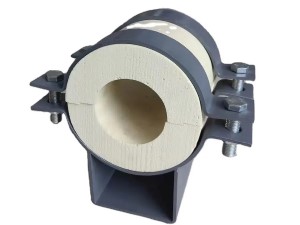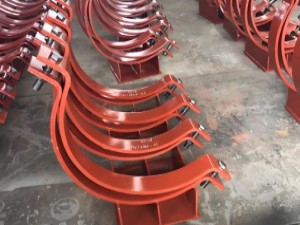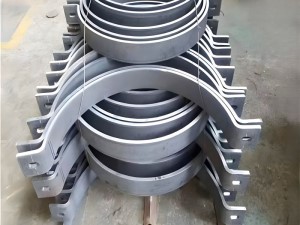
GENERAL CHARACTERISTICS OF INCONEL™ 713C ALLOY
Alloy 713 is a precipitation-hardening nickel-chromium base cast alloy. It possesses excellent strength properties up to 1800ºF (980ºC). The alloy has good castability and excellent resistance to oxidation and thermal fatigue.
CHEMICAL ANALYSISC: Carbon 0.08/0.20MnManganese 0.25 maxSiSilicon 0.50 maxCrChromium 12.0/14.0MoMolybdenum 3.80/5.20Cb + TaColumbium + Tantalum 1.80/2.80AlAluminium 5.50/6.50TiTitanium 0.50/1.00CuCopper 0.50 maxFeIron 2.50 maxBBoron .005/.015ZrZirconium 0.05/0.15
APPLICATIONS
Its high-temperature strength and ductility make this alloy suitable for use as vane material and first stage blading for jet aircraft, guide vanes for industrial turbines, press forging dies, extrusion dies and die casting dies.
FORGING
This alloy is in fact a cast alloy and is not easy to forge, due largely to the preponderance of precipitation elements that must be put into solution prior to forging. On the one hand high temperatures are required to effect this solution and on the other hand the finish forging temperature in itself must be fairly high. We must not forget the high-temperature strength of this alloy, and even with its good high-temperature ductility the hot working process will be difficult.
The alloy may be forged between around 2200/1900ºF (1205/1040ºC).
HEAT TREATMENT
The alloy is normally used in the as-cast condition, but an improvement in the 1700/1900ºF (925/1040ºC) stress rupture life may be obtained by a solution treatment for 2 hours at 2150ºF (1175ºC) followed by air cooling. Material in this condition, tested under stress at 1350ºF (730ºC) showed a marked decrease in rupture life and ductility. A stabilizing treatment, however, at 1700ºF (925ºC) for 16 hours, followed by air cooling, restores the 1350ºF properties as well as maintaining the high temperature properties. Precipitation treatment is best carried out between 1470/1650ºF (800/900ºC).
MACHINABILITY
This alloy has a very high rate of work hardening and as such is very difficult to machine. Tools must of course be very sharp and equipment extremely rigid. It is best to put this work in the hands of those most familiar with it. It has been suggested that final machining be done following precipitation treatment.
WELDABILITY
Using a normal definition, the grade is not weldable, but some success has been noted when welding 713C to other more weldable metals, or matched welds in light sections under little stress. Hastelloy W or Inconel filler metal 92 may be used in the gas tungsten arc process.






